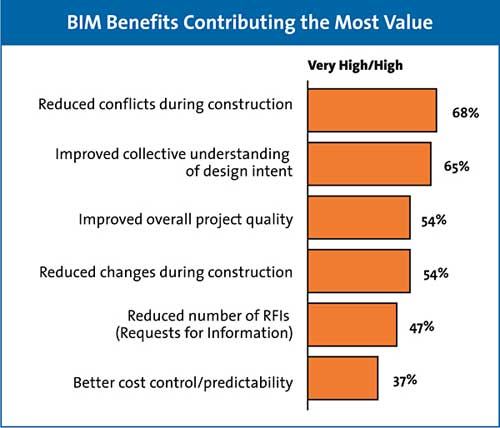Building Information Modeling (BIM) and Manufactured Complementary Building Products
Overall, then, the report points out that "the ability of teams to create richer models and share more data with BIM has helped foster more collaborative decision making on projects. BIM has proven an effective tool for this [integrated project] delivery method, breaking from the tradition of handing off completed work from one team member to the next with little or no input from others." It also summarizes the resulting overall benefits related to saving time and money through 1) conflict avoidance/resolution, 2) increased productivity/ efficiency and 3) the avoidance of rework/ changes. Beyond saving time and money, however, there are other overall benefits for all parties including 1) a better understanding of the project throughout the phases or stages, 2) better collaboration, and 3) better visualization. Some future trends also noted include the potential to reduce the need for submittals and shop drawings while allowing more time for design and less time for documenting/ processing.
 |
Source: McGraw Hill Construction 2009 Smart Market Report - The Business Value of BIM |









